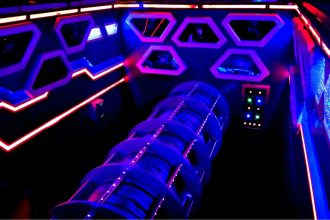Even though the red Solo cup is a party essential, it’s not the greenest option because it is disposable. Would it be best if a company produced an edible cup to replace plastic ones?
Bringing the idea of edible drinkware to “Shark Tank,” Loliware made a deal and left with it. Made of seaweed and organic sweeteners, the company offers the first edible cups in the world for sale. Where is Loliware today? Well, keep reading to find out more about Loliware.

Masterminds Behind Loliware.
Chelsea Briganti and Leigh Ann Tucker founded Loliware. Chelsea hails from Honolulu, Hawaii. He attended and graduated from the University of Hawaii at Manoa before pursuing industrial and product design at the Parsons School of Design (the New School in New York). While in school, he met Leigh, who became his business partner.
Leigh Ann Tucker is from Atlanta, and before moving to New York, she studied industrial design at the Savannah College of Art and Design. After receiving their BFAs in 2010, the two became close friends. They started their first business, The Way We See the World, a design studio that operated for over three years.

Birth of Loliware
Leigh Ann and Chelsea once competed in a Jell-O competition. The creators created something that would make them stand out by combining their passion for the environment with their love of design. Seaweed was utilized to make edible and biodegradable cups.
Additionally, the cups had various flavors due to the use of natural sweeteners in their manufacturing. This allowed them to go well with a variety of sweets and drinks. After taking first place in the tournament, they were motivated to make it a business. Although the two collected $10,000 on Kickstarter in 2011, their business activities didn’t begin until 2015. The company brought in $110,000 in just three months.
On Shark Tank Pitch
Chelsea and Leigh Ann thought they could do more even though their business had only been together for three months. Seeking a 15% equity stake in exchange for $150,000, they enrolled for the seventh season of Shark Tank. With their display, the women did not let us down.
Everything, including explaining their products and distributing samples, went smoothly. The women disclosed they still had $600,000 to raise in their fundraising campaign. Generally speaking, the Sharks dislike it when a company has already raised capital, which may dilute future equity. Mark Cuban and Barbara Corcoran got a deal with them with a quarter of a million dollars, or $600,000.
After Shark Tank
Mark and Barbara were pleased to complete the transaction with Loliware. However, it appears that the company no longer employs Corcoran. It’s unclear why, but the founders are relieved that Cuban is still on board.
Over 1,000 backers helped them raise $73,000 on IndieGoGo and $49,000 on Kickstarter in 2018. This aided in introducing the Loliware Straw, which had production challenges. The original edible cups can still be purchased on Amazon and Loliware.com. However, the company’s focus has switched to selling directly to businesses.
Loliware Net Worth
Loliware has generated a huge success from their edible cups. As of 2023, Loliware net worth is estimated around $8 million.
| Net worth | $8 Million (2023) |
| Annual Sales Revenue | $1 Million (2022) |
| Profits | – |
| Lifetime sales | – |
Loliware Net Worth Timeline
| Net Worth 2023 | $8 Million |
| Net Worth 2022 | $7 Million |
| Net Worth 2021 | $6 Million |
| Net Worth 2020 | $5 Million |
| Net worth valuation in 2015 after appearing on Shark Tank | $2.4 Million |
| Net worth valuation in 2015 before appearing on Shark Tank | $1 Million |

Conclusion
It is unknown whether the latest version of Loliware is still covered under the “Shark Tank” agreement. Chelsea Briganti, an original “Shark Tank,” spoke to CNBC in May 2022 about the company’s sea-inspired technology, which appears to be connected with the current business plan. While the company isn’t selling edible cups, it is working to create a society that is less reliant on plastic. The server is not edible but will not contaminate the waste pile floating in the water.














